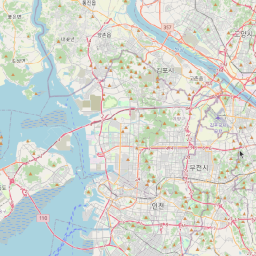Galileo is a general purpose cross-platform geo-rendering library.
Web examples
- Raster tile layer (OSM)
- Vector tile layer (Maplibre)
- Use buttons at the top to change the style of the map
- Click on any object to get information about it
- Feature layer
- NOTE! Contains large dataset (~10 MB), might take some time to load
- Draws 250 countries' borders, consisting of ~4000 polygons with ~500K vertices
- Move mouse pointer to highlight any country
General purpose
Architecture of Galileo is designed specifically to allow different modes of use:
- client GUI mapping applications
- server modules
- CLI tools
This does bring certain challenges and adds to complexity. For example, caching of loaded and rendered objects works completely differently in server in client applications. Galileo is designed in such a way as to allow the user of the library to make all the relevant decisions and not to force one way.
It also does not make any assumptions about tile layer schemas, CRS and datums. Supporting coordinate transformations for layers on the fly is planned but not yet implemented.
Cross-platform
At the moment Galileo uses wgpu backend to render the map. This means that it can be used on any platform that wgpu supports:
- All major desktop platforms: Linux, MacOS, Windows
- Mobile platforms: Android, iOS
- Web though compiling to WASM (and using either WebGL or newer and cooler WebGPU)
Still, the backend is not integral part of the Galileo design, so we will probably try other promising backends (like vello).
Features
Galileo is an active WIP, here is the list of the features that are already present (mostly as POC at the moment):
- raster tile layers
- vector tile layers with styling
- vector geo-data layers (feature layers) with styling
- 3d view and 3d object rendering
- user-input handling on layers (mouse only at the moment, touch is WIP)
Running examples
There are examples in galileo crate that can be run with cargo run --example <name> command. Web examples are separate creates in wasm_examples directory. These are excluded from the workspace (because Cargo does not like cross-platform workspaces). To run those you will need to install wasm-pack:
wasm-pack build wasm_examples/countries --target no-modules --release
After that open index.html in your browser (must be served from localhost, use your favourite developer server).
Cross-compile from Linux to Windows
Install the target:
rustup target add x86_64-px-window-gnu
Install cross-linker. For Debian/Ubuntu:
sudo apt-get install mingw-w64
And then build it:
cargo build --target x86_64-px-windows-gnu
License
Licensed under either of
- Apache License, Version 2.0 (LICENSE-APACHE or http://www.apache.org/licenses/LICENSE-2.0)
- MIT license (LICENSE-MIT or http://opensource.org/licenses/MIT)
at your option.
Contributing
The project is in architecture design stage ATM. If you have a suggestion about high-level stuff, please, open an issue and lay out your ideas. Also, if you want to create examples and test stuff on Android, MacOS or iOS, PRs are welcome.
If you want to report a bug, be patient. You will have plenty opportunities in the future.





